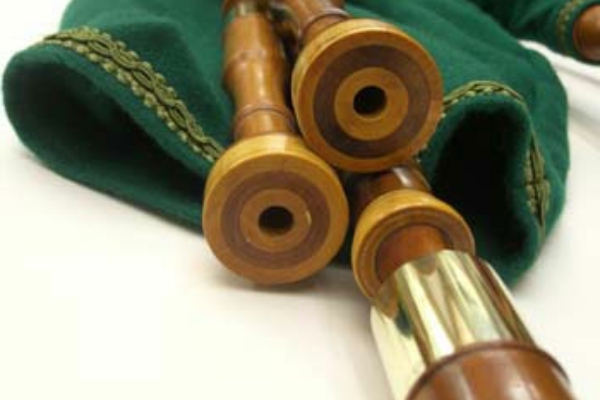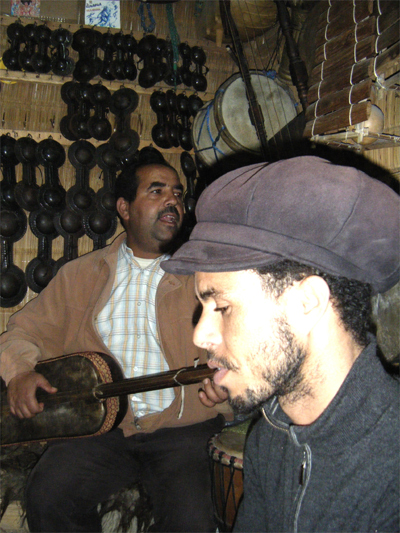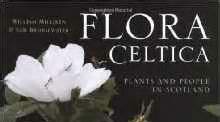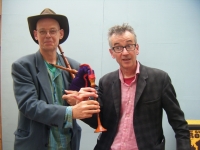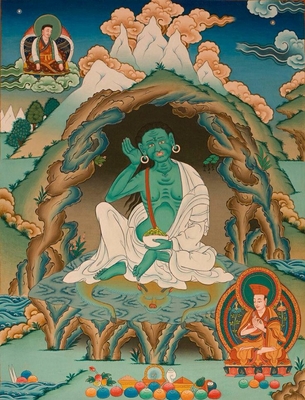I wrote this enthusiastic piece in 2007 in Morocco about Gnaoua- a type of Moroccan trance music.
Sunday 15th December 2007. Essaouira, Morocco.Last nights session at Omar's Africa Shop was one of the musical highlights of my life. Over an hour and a half of music should be. Total. Passion. Musicians giving themselves to their music. A devotion.
Backtrack 29 years. March/April 1979.
I spent a week in Essaouira, Morocco, in on my big two year backpacking travels to Japan. It is a quiet fishing town with an ancient and fascinating history of trading with Europe. From the late 1960's it been on the hippy trail- a cheap place to hang out and blow your brains out on local kiff. I avoided all that. That April 5th I found myself part of a big crowd following a street procession which was part of a festival. There was an amazing shawm and drum group. And there was another group of musicians playing drums and metal castanets. The music is called gnaoua (or gnawa) and it is a kind of trance music. I was hooked- and since then I have always been on the lookout for more information, recordings and most of all performances of this music. Its roots are in black Africa- brought to North Africa by slaves- possibly from Guinea, Senegal or Sudan. Some of the songs contain words that the singers now do not understand- words from black African languages. I have heard accounts of how they can 'play' people into trances (often women dressed in red) and 'play them out' of a trance. I did manage to go to a concert at the Edinburgh Festival in 1983 by a gnaoua group and I taped it and have always treasured the tape.
The melody is played on a basic 3 stringed banjo. The player only use a few notes; they play sort of fluid bluesy riffs. This melody is accompanied by kakabahs- metal castanets on which they play subtle hard- to- grasp rhythms. The songs are 'call and response'- the gimbri player sings a line and the others sing it back- or sing a chorus line.
Backtrack 5 years. December 2002 .
Liam and I went to Morocco and I had hoped we would hear gnaoua music. In Marrakesh there are a few Gnaoua players in the big square- but they are not playing music- they rush to unsuspecting tourists, play a few seconds of kakabahs and then terrorise them into giving them money. We avoided them. We never got to hear any live playing. I bought some kakabahs but I have not learnt to play them.
December 2007.
On my latest trip I did not go with high hopes of hearing any live gnaoua music. I spent a week in Essauoira and on the third day I spotted a tattered sign to 'Africa Shop' and went down a little alley to investigate. It is a nice historical twist that this shop is only a few hundred yards away from where I first heard the gnaoua musicians in 1979.


The shop is very small. About 5 foot wide and less than 20 foot deep, with an open 'shop front' onto the alley. It is packed with instruments from all over Africa– on the floor, hanging on nails on the wall or on hooks outside the shop. There I met Omar (left) and Sidi Mohammed- known as Simo (Right). Simo was born in 1979- the year I first visited. Unsurprisingly I started talking about bagpipes and we got into a fascinating discussion. They both speak very good English. My French is basic and pretty pas ca-va.


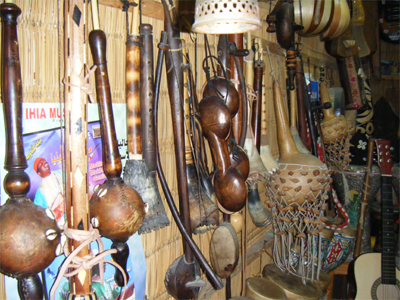
They told me to come back later after sunset- about 6.30. That is usually when they have a session. And I did come back and this is what I wrote the next morning......
Sunday 15th December 2007. Essaouira, Morocco.
Last nights session at Omar's Africa Shop was one of the musical highlights of my life. Over an hour and a half as music should be. Total. Passion. Musicians giving themselves to their music. A devotion.
Gnaoua music is compelling- hypnotic- what can I do but give myself up to it? It speaks to me of suffering, pain, life and devotion.
So what was the physical experience? What happened? I came to Omar's shop after sunset. His shop must be about 5 foot by 20 foot. The walls are covered with instruments... most of one wall is covered with pottery goblet drums. Djembe drums on the ground. Lyres, fiddles, shawms, gimbris on the other wall.... lutes and other instruments hang from the ceiling. There is a ladder up into a hole in the ceiling... a loft?
Omar is writing post cards to overseas friends. He has even bought a post card that I have just bought... a photo of Essaouira probably taken around the time I was there first.
His English is good... he hopes his group will be playing in Marseilles in March. I sit on the little bench next to him. He is a gentle and generous guy- a Bob Marley type with dreadlocks and a lovely quiet and friendly manner. I assume he is in his late 20's.
A younger guy comes in and Omar starts playing the gimbri- a basic 3 string banjo. The young guy starts playing the cakabahs and sings. What a singer! And the hypnotic clacking kakabahs have begun.This guy sings a wonderful high note every now and then and he holds it. Is it sharp or flat? Whatever it is- it is just the right note. Yea!
Another man arrives and I hand him over a pair of kakabahs. I am crouched at the back of the shop behind 'the counter' so every time someone else comes in its my job to hand them out as the shop is far too narrow for anyone to reach to the back wall where they are all hanging. I hand them to this second guy and he is away with the clacking... both in time with each other.... it speeds up, but later I notice it has slowed down.... it is all so uncontrived that I don't notice exactly when it slows down. But I get a kick every time they speed up! How do they manage it? They were playing a sort of 3 time rhythm and now it is a 4 time rhythm. Or is it? I dunno. ( I think of Petes' horror at someone who wanted to 'de-skill music'!). Omar sings each line and all the others sing back at him.
I hand out more sets- and now there must be at least 4 guys playing in the shop- I am crouched on the bench at the back so I cannot really see. Some of them are sitting perched on goblet drums that are on the ground. Where do these guys come from them? Have they just done a days work? Do they have jobs? They just appear once the session starts. After the end of each song they chant a “Allaha massalla alik arasol Allah”-their gratitude to God.
After a few songs Omar hands the gimbri to Hamid who starts a riff, but has not really got into the groove when he looks up and sees a big guy squeezing into the shop... and he stops playing, gets up and hands the gimbri to this big guy. Why did Hamid stop? ...Because this is Moustapha. And he is the Main Man! Moustapha sits down beside me on this small bench and the moment he starts playing I know I am sitting next to a Master Musician. The big music starts! Sitting there next to him I am transfixed by his left hand working away at each tune (I have to take care not get in the way of his right hand- there is not much room on the bench). Big powerful soulful sounds he gets from the gimbri. Deep soul, wondrous licks and I find myself chanting the response with the rest of them and then the music speeds up.... can it go that fast? Will he take yet another turn at singing or is he bringing the song to an end?... and somehow it is slower again and we are all singing... I cannot see how many people are playing – I don't want to get in the way of The Big Mans' right hand as he plunks his soulful way.... I can just make out three people crouched on drums playing the cakabahs... occasionally I get a glimpse of the dark alley outside the shop. Are there two westerners listening in the alley? I sometimes catch sight of an old spaced out local crazy guy dancing in the alley... and why not?
This pulsing metal rhythm hold us all in its spell and the musicians all know the exact moment that each song will end. One moment they are playing kakabahs at breakneck speed and then they all hit the final 'clack' simultaneously.
The music is over. “Allaha massalla alik arasol Allah”.
I talk to Moustapha... he is a professional musician... I thank him profusely. Omar seems to have disappeared. I go out into the street.....
At last I have experienced Gnaoua music. I have been part of it. Its deep soul has touched my heart.
Last nights session at Omar's Africa Shop was one of the musical highlights of my life. Over an hour and a half as music should be. Total. Passion. Musicians giving themselves to their music. A devotion.


